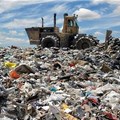Unpacking the effectiveness of SA legislature in trying to reinvent the EPR wheel

The EPR regulations and associated sector schemes were published and came into force on 5 November 2020. Before this, existing laws had contained some elements of EPR and sector collection schemes have largely been run by voluntary industry organisations. This is the first comprehensive set of regulations seeking to regulate EPR measures in South Africa. The new EPR regime applies to producers of paper, packaging and some single-use products; electrical and electronic equipment; and lighting equipment, with designated 'identified products' within each sector.
Scope of EPR regulation
Defining the scope of EPR regulation is crucial. Internationally, the principle of EPR is to hold the brand owners of certain products on the market accountable for the waste generated by their products at the end of their lifecycle. For example, in Canada (British Columbia), a beverage company would be defined as a producer (the manufactured product is used in a commercial enterprise, for sale or distribution under its own brand), so this company would be required to set up or join a scheme which ensures that the beverage-filled bottles are returned or recycled post-consumption. In most international jurisdictions, it is therefore the person whose activities produce waste / the person that sells a final product that is considered to be the producer for purposes of EPR regulation, rather than the person who manufacturers the packaging.
This is because the brand owner is typically the entity that has the power to influence or specify the design of the product. If product designs are to be changed to make them easier to recycle or more valuable in the recycling value chain, then it is typically the brand owner that must make or at the very least agree to this decision. From a consumer point of view, it is also the brand owner who is associated with any such products littered on the side of the road – you see a Coca-Cola bottle on the floor, you don't consider that the bottle was made by a bottle manufacturer, not Coke.
Responsibility of brand owner
As the person which introduces a packaged product onto the market, it is thus the brand owner who should fulfil the extended producer responsibilities of the producer for that product, according to international best practice. Arguably, this is also the intention of the empowering provisions in the National Environmental Management: Waste Act of 2008, which apply EPR measures to the post-consumer stage of the product, i.e., the product which has gone to market, not the product as it evolves through the supply chain.
South Africa has, however, adopted a wider EPR scope, at least insofar as the paper and packaging industry is concerned. Under the new EPR scheme, responsibility partly lies with the manufacturer of the packaging, e.g., Mpact, Sappi or Mondi. Producers are thus widely defined under the EPR regulations to include the full value chain of manufacturers, converters, refurbishers, importers and brand-owners; and the identified products are similarly defined to include packaging components pre-final saleable product.
Voluntary industry-driven schemes
Government's rationale for extending the EPR scope is predominantly informed by the historic approach which has been at play in the market until now, under voluntary industry-driven schemes. The Packaging Council of South Africa (PACSA) (now Packaging SA) and The Glass Recycling Company (TGRC) have been operating as voluntary industry bodies which promote product collection and recycling through their members, with membership comprising principally of converters and secondarily of associates (the latter being the major raw material suppliers, material organisations, brand owners, retailers and other organisations and associations with interests in the industries). Manufacturers and converters in these sectors have thus supported (and pushed for) the government's extension of the EPR scope to their factions to formalise the current practice of self-regulation in South Africa's industries. Government's reigning in of a wider scope of manufacturers and importers of products also seems to align with its idea of a circular economy, i.e., to allocate responsibility for the impact their products have on the environment, from manufacture to the day they are discarded.
Potential influx of producer responsibility organisations
South African industry players have voiced concerns that placing EPR only on brand owners is likely to fail, with major brand owners intending to set up their own producer responsibility organisations (PROs). This will result in a market influx of PROs, each driven by separate corporate agendas and individual compliance schemes, which may override each other or complicate the lines of responsibility. This also leaves small PROs by the wayside.
However, the wide definitions undermine the effectiveness of the EPR regime by blurring the lines in allocating responsibility throughout the value chain. This has several unintended consequences.
Levelling the playing field
Firstly, limiting the scope to those brand owners who sell the final product or put it on the market is important because it levels the playing field between locally manufactured goods, goods produced by third parties, goods which use imported packaging and fully imported goods. Regulating only locally based supply chains will discourage local manufacturing and turn the country into an importer of finished goods to circumvent regulation. Overly broadening or restricting the scope of 'identified product' components also blurs the lines between regulated and unregulated manufacturing activities. In addition, including converters in the definition of producer opens the field to powerplays by large monopolies / duopolies in the South African market – where one cannot establish a PRO without them, but the effectiveness of the resultant PRO may be constrained by the veto powers of these large supply chain actors.
Concerns of 'double-taxation'
Secondly, the current scope of the EPR regulations means that a packaging manufacturer in South Africa will have to enlist the co-operation of all of its customers (i.e., the brand owners) to join the scheme and will be ultimately responsible if they do not, which is impracticable. This wide net further introduces concerns of "double-taxation". If the brand owners will be responsible for the EPR fee obligations, why should the upstream manufacturers also be? In addition, extending the scope of EPR to multiple parties creates a very real reporting challenge, where duplications of declared "sales" and "targets" will be reported to the government across the supply chain, some of which may not be reconcilable. As a result, the industry could face the issue of double counting, which causes significant complications for accurately calculating collection and recycling rates for products placed on the market.
Equity and fairness
Thirdly, the fact that the sector notices and schemes for lighting equipment and for electrical and electronic equipment do not seem to be drafted as widely as the paper and packaging sector scheme begs the question of equity and fairness. Why are the equipment products regulated only in their final working and saleable state while paper, packaging and some single-use products are regulated throughout the supply and value chain?
It has been widely reported that international EPR regulation has been effective in driving the circular economy agenda. It is therefore debatable whether the South African legislature was correct to try and reinvent the wheel, or whether it will succeed.
Amendments to EPR regulations proposed
Recent developments seem to indicate that government may have heeded brand owner calls to revisit the allocation of responsibility. On 15 March 2021, government proposed amendments to the EPR regulations and the paper and packaging sector notice which seek to amend the definition of "producer" to mean persons who put a certain volume of identified products onto the market on an annual basis, and to differentiate between scenarios where branded goods are sold by local brand owners, foreign brand owners or retailers. However, for local brand owners, the proposed amended definition of producer continues to extend the responsibility to the product manufacturer, converter and/or the brand owner. There is no doubt that the "and/or" language drafted into the proposed amendments creates ambiguity as to who is accountable, which creates a real risk that some producers will use this loophole to avoid contributing to EPR schemes. And again, the local producers only cover a portion of the market.
It therefore appears that the proposed amendments, which are currently out for public comment, are ineffective and continue to stray from the international legal position.
Hybrid EPR model questionable
South Africa's approach is driven by the need to transition from the voluntary structure run by industry, to the legislated structure run by brand owners. South Africa's attempt at creating a hybrid EPR model is, however, questionable without the necessary clear allocations of responsibility or supporting transitional arrangements. Time will tell whether our implementation of this new regime will succeed.




























